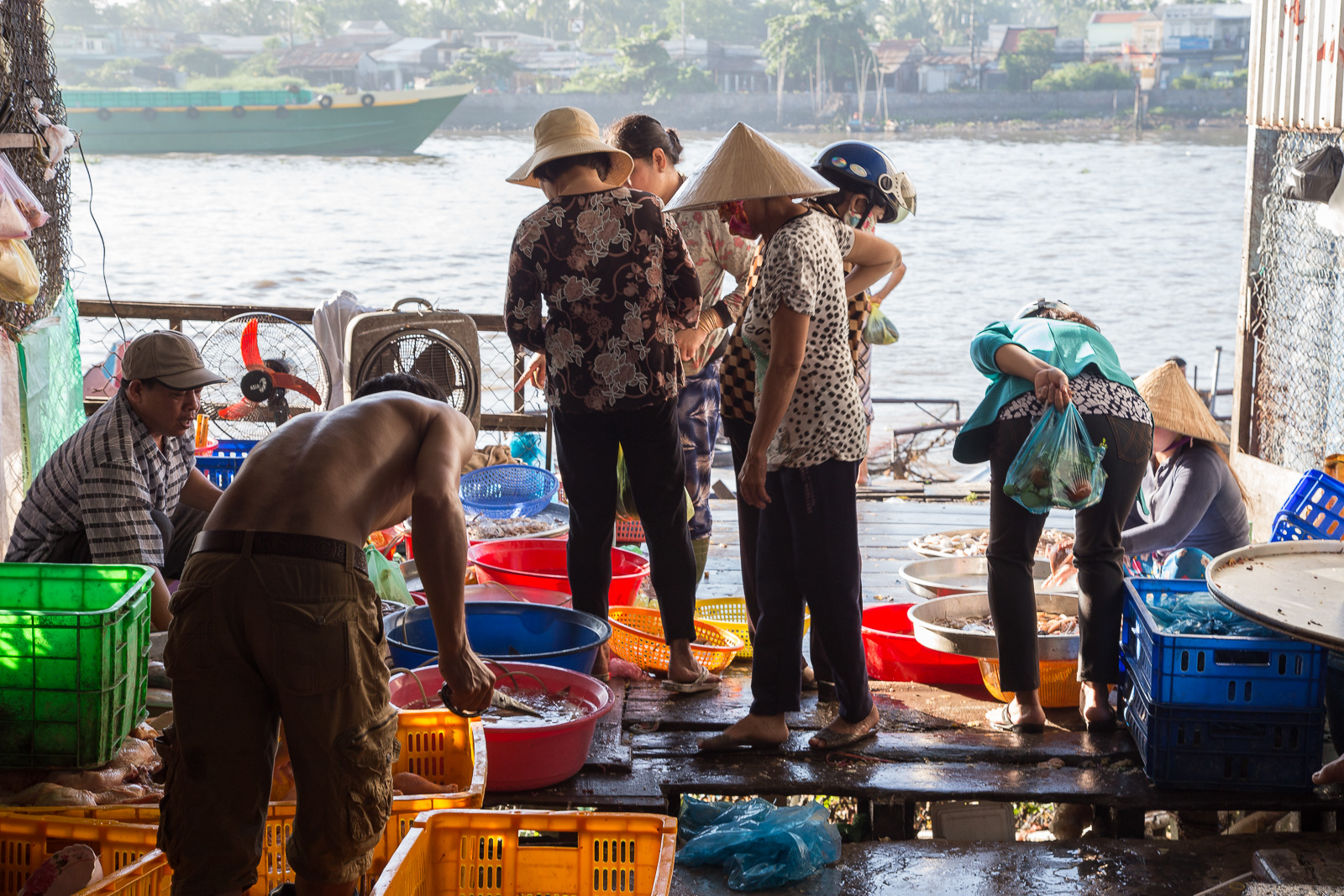can tho floating market

Past the lady selling live frogs tied up by the bundle, is a writhing tub of eel-like fish. Next door, a snail has taken the better part of the morning to climb out from its red bucket in a bid for freedom. And beyond that? Well, for anyone not used to an Asian market (me) it’s simply a dizzying array of unfamiliar tropical fruits, great heaped mounds of unidentified herbs, and meats displayed in seemingly flagrant disregard to basic standards of food health and safety.
If you want to experience Vietnamese food and produce markets, the southern city of Can Tho is a great place to do it. Prices are generally cheap and, at least in our experience, vendors are less inclined to take fiscal advantage of foreigners.
Our local wholesale food market happened to be right on the doorstep of our hotel, snaking its way along the Mekong River down Hai Ba Trung Street in central Can Tho (you’ll find another on Tran Van Kheo Street).
But the town is arguably best known for its floating markets, Cai Rang and Phong Dien. Cai Rang is the larger of the two wholesale markets and numerous boats take tourists from the dock at Hai Ba Trung for early morning visits.
As a system of economic transport in Vietnam, waterways make a great deal of sense. But as road transport developed, smaller floating markets – where farmers sold directly to their customers from boats – began to decline. Strategically located in the Mekong Delta, though, Can Tho became a beacon for any remaining water-bound trade and, as a result, has endured and today is one of the strongest floating markets left in the country.
We started relatively late in the morning, at 6.30am. It’s about a 10-15 minute boat ride to the market proper, punctuated by stops for iced coffee or other treats from vendors who attach their vessels to yours like pilot fish. Breakfast was a bowl of noodle soup at a terrestrial restaurant and then it was back on board to marvel at the floating commerce, with people busy stripping lettuces, stacking pineapples and doing deals, all aboard boats.
This lady provided us with a much-needed icy caffeine fix at 15,000 dong each (AUD $0.90)
A detour up a smaller tributary took us to a rice paper noodle factory and another took us to a fruit orchard where we were tempted with barbecued frog, rat and snake. At a nearby fish farm we stopped for lunch, which involved some fishing on our part and a lot of eating. We returned at about midday.
Mmmmmmm...rodent, frog, snail and snake. All we need now is a beer to wash it down!
A jackfruit in cross-section. Although cheaper to buy like this there are plenty of street-vendors selling pre-shucked fruit minus the weird textured sinews and pips at a slightly higher price - a tropical snack ready-to-go.
The details
We shared our tour with another family and paid one million Vietnamese dong (or AUD $60), which included visits to a rice noodle factory, fruit orchard, fish farm and lunch.
Tours operate early (think 5.30am) from near the Ho Chi Minh statue on Hai Ba Trung street, Ninh Kieu. For more information, ask at the Mekong Official Tours Information Bureau, phone +84 907 85 29 27 or email Mekong Tours.


















